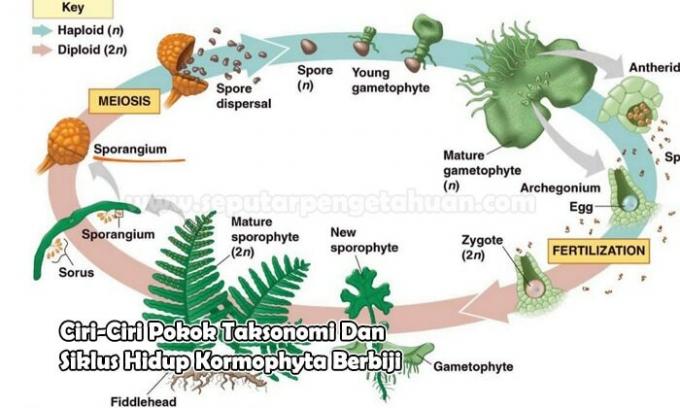Main Taxonomic Characteristics and Life Cycle of Seed Cormophyta (Complete)
Main Taxonomic Characteristics and Life Cycle of Seed Cormophyta (Complete) – Previously I had posted an article related to Main Taxonomic Characteristics and Life Cycle of Sporous Cormophyta now I will discuss about the Taxonomy and Life Cycle of Seed Cormophyta.
Main Taxonomic Characteristics and Life Cycle of Seed Cormophyta (Complete)
In Kormophyta there are two main groups, namely:
- Gymnosperms (open seed plants): seeds are not covered by leaves and fruit (carpellum)
- Angiosperms (closed seed plants): seeds are surrounded by leaves and fruit (carpellum).
The seed cormophyta that have microspores are Angiosperms. In their life cycle, both Gymnosperms and angiosperms, produce seeds in an effort to disperse themselves in a wider area for the next generation to rotate.
Seeds are formed through the fertilization process which is preceded by pollination or pollination in flowering plants.
Fertilization is divided into two categories in seed cormophyta, namely:
- Single fertilization: only the fusion of male and female sex cells occurs (in Gymnosperms)
-
Double fertilization: underwent two fertilizations. This fertilization occurs in the ovary. Inside the ovary, there are 8 cores, namely:
- Antipodes: 3 haploid nuclei
- Secondary institutional nucleus (IKLS): 2 haploid nuclei fused to become diploid
- Synergy: 2 haploid nuclei
- Ovum: 1 haploid nucleus
Double fertilization includes:
- Generative nucleus I (in the pollen tube) + ovum —> zygote (2n)
- Generative nucleus II (in pollen reeds) + IKLS —> endosperm (food reserves / 3n)
In double fertilization, which has a triploid chromosome is the endosperm (food reserve) which is the result of fertilization of IKLS by the generative nucleus II. Embryos in seed plants can be formed for several reasons, including:
- If the embryo comes from a fertilized egg it is called amphimixis.
- If the embryo occurs without going through the fusion of sperm and ovum it is called apomixis.
Also Read:30 Functions of the Liver for the Human Body (Full Discussion)

The types are:
- Apogamy i.e. embryos from synergists or antipodes without fertilization.
- Parthenogenesis the embryo from an unfertilized egg.
- adventitious embryo namely the embryo of the nuselus cell, which is the part other than the bladder of the institution.
If you experience both types of embryo formation, it will form many embryos or polyembryons.
Thus the discussion about Main Taxonomic Characteristics and Life Cycle of Seed Cormophyta (Complete), hopefully it can be useful. That is all and thank you.
